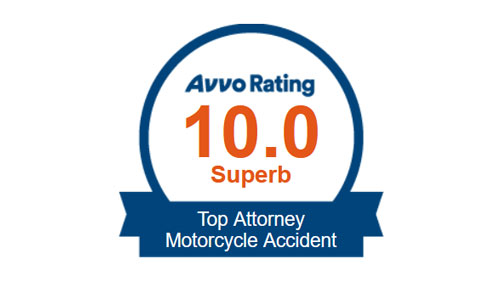
Intentional Infliction of Emotional Distress – Negligent Infliction of Emotional Distress Attorney California
In California, a person may be held liable for resulting damages if he or she intends to cause, or negligently causes an emotional rather than physical injury to another. The best thing you can do is to discuss these scenarios with a Lawyer. Call us at 800-816-1529.

California Attorney for Intentional and Negligent Infliction of Emotional Distress
Inflicting Emotional Distress on Purpose in California
In California, a person may be held liable for resulting damages if he or she intends to cause an emotional rather than physical injury to another person. Being the victim of intentional infliction of emotional distress can have devastating effects on a person’s quality of life, so it is imperative that you contact an experienced attorney who can explain your legal options if you have been victimized by such a crime.
Infliction of Intentional Emotional Distress
To hold a person liable for intentional infliction of emotional distress, it must be shown that:
- The defendant’s conduct was outrageous;
- The defendant intended to cause emotional distress;
- The plaintiff suffered emotional distress as a result of the conduct.
A plaintiff may also establish intentional infliction of emotional distress by demonstrating:
- The defendant acted with reckless disregard for the likelihood that the plaintiff would suffer emotional distress;
- The defendant knew the plaintiff was present when the conduct occurred;
- The plaintiff suffered severe emotional distress; and
- The defendant’s conduct was a substantial factor in causing the plaintiff’s severe emotional distress.
Extreme Emotional Struggle
Severe emotional distress refers to distress that is so intense or persistent that no reasonable individual could be expected to endure it. It includes extremely unpleasant mental responses such as fear, grief, shame, rage, and anxiety. Whether emotional distress qualifies as “severe” is a factual question for the jury.
Outrageous Conduct
When conduct is outrageous, it is so extreme that it would be intolerable to a reasonable person. If a defendant:
- Abuses a relationship or position that gives him or her the ability to harm the plaintiff’s interests;
- Is aware that the plaintiff is susceptible to injuries through mental distress; or
- Acts intentionally or unreasonably with the knowledge that the acts are likely to result in illness through mental distress, the behavior may be deemed outrageous.
Abuse of certain types of relationships, such as those between:
- Employer-employee;
- Insurer-insured;
- Landlord-tenant;
- Hospital-patient;
- Attorney-client;
- Collecting creditors; and
- Religious institutions, is frequently considered outrageous.
Without aggravating circumstances, the use of profanity, obscenity, or abuse is typically insufficient to qualify as “outrageous.”
Damages
Even if no physical injury or monetary loss has been sustained, a person who has suffered intentional emotional distress can recover compensatory damages.
An injury need not be physical for it to have a significant impact on a person’s life. Emotional wounds can be equally as painful as many types of physical wounds, and they are often more difficult to treat.
If you or someone you know has been the victim of intentional infliction of emotional distress, a lawyer can assist you in recovering damages for your injuries. Please contact the personal injury attorneys the Law Office of Norman Gregory Fernandez & Associates for a free consultation at 800-816-1529 or click here.
Intentional Infliction of Emotional Suffering – California Law
In California, intentional infliction of emotional distress is a legal claim that arises when the outrageous behavior of the defendant causes you to experience emotional distress and was done intentionally or with reckless disregard for its effect.
A successful lawsuit can result in the victim recovering both compensatory and punitive damages.
How do I file an intentional infliction of emotional distress claim?
Call our expert attorneys at the Law Office of Norman Gregory Fernandez & Associates now for a free consultation at 800-816-1529 or click here.
To prove a claim for intentional infliction of emotional distress in California, a plaintiff must demonstrate:
- The defendant’s conduct was outrageous;
- The conduct was either reckless or intended to cause emotional distress; and
- The plaintiff suffered severe emotional distress as a result of the defendant’s conduct.
What does the legal definition of “extreme emotional distress” entail?
According to California law, emotional distress can include (but is not limited to) the following:
- suffering,
- anguish,
- fear, horror,
- agitation,
- grief,
- anxiety,
- concern,
- shock, and
- humiliation.
But for emotional distress to be recoverable under California’s “intentional infliction” law, it must be severe.
Extreme emotional distress is neither mild nor transient. It is distress so severe or prolonged that no reasonable person can be expected to endure it.
A person’s actions are outrageous if a reasonable person would consider them to be indecent.
What does the term “outrageous conduct” mean?
There is more to outrageous behavior than indignities, annoyances, hurt feelings, or bad manners.
- A person’s actions are outrageous if a reasonable person would consider them to be indecent.
- Whether the defendant abused a position of authority or a relationship that gave the defendant the real or apparent power to affect the plaintiff’s interests;
- Whether the defendant knew that the plaintiff was especially susceptible to emotional distress; and
- Whether the defendant knew that his or her conduct would likely cause emotional harm.
What does “reckless disregard” mean?
For purposes of California’s intentional infliction of emotional distress law, a defendant acts with reckless disregard if:
- The defendant is aware that emotional distress is likely to result from his or her conduct; or
- The defendant gives little or no thought to the probable consequences of his or her conduct.
It is not required that the defendant acted with malice or evil intent. It is sufficient that he or she engaged in outrageous behavior without considering the likely repercussions.
Does the plaintiff need a physical injury in order to recover damages for emotional distress?
No. To recover damages for severe emotional distress, the plaintiff need not demonstrate physical injury.
In contrast, emotional distress damages are frequently covered in cases where the plaintiff has incurred significant medical expenses, lost wages, lost earning capacity, or other compensatory damages.
Can an injured party recover punitive damages?
Yes. In California, plaintiffs may recover punitive damages in cases of recklessness and intentional wrongdoing.
Because intentional infliction cases require “outrageous” conduct, they are among those in which punitive damages are most likely to be awarded.
What are some examples of intentional emotional distress infliction?
Cases in which intentional infliction of emotional distress is frequently found include (but are not limited to) the following:
- Sexual assault or abuse;
- DUI causing death or injury;
- Assault and battery causing great bodily injury;
- Knowingly manufacturing or distributing an extremely dangerous product;
- Retaliation against a whistleblower; or
- Excessive use of force.
“Negligent Infliction of Emotional Distress” – Infliction of emotional distress through negligence. Legal System in California
The law of California permits victims to recover damages for negligently causing emotional distress (abbreviated NIED).
Under California law, emotional distress damages may be claimed by a person who was either
- a direct victim of another’s wrongdoing or
- a bystander who witnessed a close relative’s injury.
Damages for emotional distress can include both economic- and non-economic damages, such as:
- Medical bills,
- Bills for psychological counseling,
- Lost wages,
- Pain and suffering, including loss of enjoyment of life
What does emotional distress mean according to California law?
In California, emotional distress includes (without limitation):
- mental distress,
- emotional injury,
- emotional trauma,
- humiliation, and
- shame.
Serious emotional distress exists when an average, reasonable person would be incapable of coping with the mental stress caused by the case’s circumstances.
The essential components of a “direct victim” claim
A plaintiff is the direct victim of negligent infliction of emotional distress if:
- The defendant acted negligently, and
- The plaintiff suffered severe emotional distress as a result of the defendant’s negligence.
Does a physical injury need to exist for a “direct victim” claim?
No. A jury must determine whether the elements of a negligence cause of action are present.
In other words, did the defendant owe the plaintiff a duty of care in California, and if so, did he/she breach this duty by mishandling the situation?
If these questions are answered in the affirmative, the only remaining question is whether a reasonable person in similar circumstances would be able to endure the mental stresses caused by the plaintiff’s injury.
The elements of a “bystander” emotional distress claim
To prove negligent infliction of emotional distress as a bystander in California, a plaintiff must demonstrate the following:
- The plaintiff is closely related to the victim;
- The defendant’s conduct negligently caused injury or death to the victim;
- The plaintiff was present at the scene of the injury (“zone of danger”) when it occurred and was aware that the victim was being injured; and
- As a result of the injury, the plaintiff suffered severe emotional distress beyond what would be expected under the circumstances.
Who is considered a “close relative” by California law?
In the absence of exceptional circumstances, “close relative” refers to:
- A spouse, registered California domestic partner, or relative who resides in the same household as the victim6; or
- The victim’s parents, siblings, children, or grandparents.
With the exception of domestic partners, California courts have not permitted unmarried cohabitants to recover bystander damages for emotional suffering, even if they have a “close relationship.”
What is the definition of “witnessing” an accident?
To recover damages for emotional distress caused by a bystander, the plaintiff must have been both:
- Present at the scene of the incident that caused the victim’s injury at the time it occurred, and
- Aware that the incident was causing the victim’s injury.
If the plaintiff heard the accident but did not immediately realize it was causing harm, there is no basis for a claim for negligent infliction of emotional distress — even if the plaintiff learned of the injury moments later.
This does not imply that the plaintiff is required to witness the incident. It indicates, however, that the plaintiff must have been aware through some sensory means that his or her relative was injured at the time of the accident.
Claims for Infliction of Emotional Distress Due to Negligence in California
In California, the negligent infliction of emotional distress (NIED) cause of action permits plaintiffs who have suffered emotional damages due to the negligent conduct of the defendant to recover.
Importantly, the NIED cause of action is available not only to plaintiffs who were directly harmed by the negligence of the defendant, but also to third-party bystanders who were not directly harmed by the defendant’s conduct.
Witnesses may seek compensation for the emotional distress they suffered as a result of witnessing the accident.
The fundamental basis for the negligent infliction of emotional distress cause of action is that individuals have a duty to exercise reasonable care so as not to cause emotional suffering and distress to others; however, in California, this duty is not owed to all other individuals.
It only applies to qualified individuals for whom such a duty is presumed to exist. As with other negligence actions, if a defendant breaches this duty, they may be held liable for damages.
Suppose two brothers are walking around their neighborhood when the defendant, who is speeding and driving negligently, loses control of his vehicle and crashes into one of the brothers, severely injuring him. In this example, the uninjured brother may sue the defendant for damages based on negligent emotional distress infliction.
The concept of emotional distress is pivotal to the NIED cause of action, then, what precisely is emotional distress?
Emotional distress encompasses mental anguish and suffering, including, among other negative emotions, anxiety, grief, fear, shock, and humiliation. In the state of California, physical symptoms are not necessarily the result of emotional distress (such as significant weight loss as a result of anxiety). Emotional distress alone is sufficient to constitute an NIED cause of action. Obviously, the emotional distress experienced in a valid NIED case must be reasonable given the case’s circumstances. Courts do not necessarily expect individuals to be emotionally unaffected by grave or shocking events.
The Theory of Direct Victims
Under the direct victim theory, the plaintiff must establish:
- that the defendant acted negligently;
- that the plaintiff suffered emotional distress; and 3) that the defendant’s negligence caused the plaintiff’s emotional distress.
The direct victim theory is applicable in a limited number of circumstances, including the mishandling of corpses, medical diagnostic negligence, and the breach of a preexisting relationship duty (Burgess v. Superior Court, 1992). This is the most typical illustration of direct victim theory.
As stated by the court in Wooden v. Raveling (1998), “direct victim cases are those in which the plaintiff’s claim of emotional distress is not based on witnessing an injury to a third party, but rather on the breach of a duty owed directly to the plaintiff.”
Importantly, the court will decide whether a duty was directly owed to the plaintiff as a victim, and this determination will be subjective to some extent.
The Bystander Concept
Under the bystander theory, the bystander-plaintiff must demonstrate the following:
- the bystander was closely related to the injured party;
- the bystander was present at the scene of the accident and was aware of the injury as it occurred; and
- the bystander suffered greater emotional distress than a disinterested witness would.
Importantly, the plaintiff-bystander is not required to have suffered physical injury in order to sue for NIED (Dillon v. Legg, 1968).
Importantly, the plaintiff-bystander must have a close relationship with the injured party. The close relationship requirement is quite stringent. As stated by the court in Thing v. La Chusa (1989), “absent exceptional circumstances, recovery should be limited to relatives living in the same household or the victim’s parents, siblings, children, and grandparents.”
In Elden v. Sheldon (1988), the court demonstrated the strictness of this requirement by stating that unmarried cohabitants would not be eligible.
The second crucial element is contemporaneous perception of the injury’s occurrence. Even a few seconds late will not be considered.
As stated by the court in Ra v. Superior Court (2007): “A bystander who hears an accident but is unaware that it injured a family member does not have a viable claim for NIED, even if the missing knowledge is acquired moments later.”
Foreseeability According to Bystander Theory
Importantly, whether a defendant owes a duty of care to a bystander is contingent on whether it was reasonably foreseeable that the defendant’s negligent conduct could cause emotional distress to the plaintiff-bystander upon witnessing the injury.
The Dillon court instructed that future courts must examine each case on its own merits, based on its specific circumstances, to determine whether there was reasonable foreseeability and, consequently, whether the defendant owed a duty of care to the bystander. The court went on to enumerate several factors that influence the likelihood that a bystander will experience emotional distress.
This includes the proximity of the plaintiff to the accident itself, whether the plaintiff experienced emotional anguish and shock as a result of witnessing the injury, and the closeness of the plaintiff’s relationship with the injury victim.
Notably, although the proximity of the plaintiff-bystander plays a role in determining foreseeability, the plaintiff-bystander need not be standing within the zone of danger of the accident – that is, the plaintiff-bystander need not have been at risk of injury – to successfully sue the defendant under the bystander theory of NIED.
Minor Wounds to the Primary Victim
California has always been at the forefront of NIED law and policy, making the NIED cause of action available to an increasing number of plaintiffs and types.
Current California law permits a plaintiff-bystander to successfully sue the defendant for damages under NIED even if the direct victim was not seriously injured.
Suppose a mother and her son are standing on the sidewalk. A cyclist carelessly riding on the sidewalk loses control and crashes into the son. Son is compelled to visit the hospital and undergo numerous tests, including MRIs and blood draws. Doctors may have even prescribed medication for the child. However, it is ultimately determined that the son suffered minimal injuries, if any, as a result of the collision. In such a situation, the mother would still be able to sue under the bystander theory of NIED if she suffered genuine emotional distress as a result of the accident. What matters is her perception and reaction, assuming they are reasonable.
If you have been the victim of intentional or negligent infliction of emotional distress, call our expert attorneys at the Law Office of Norman Gregory Fernandez & Associates now for a free consultation at 800-816-1529 or click here.

Get Help Now
The Law offices of Norman Gregory Fernandez & Associates has over 25 years experience handling personal injury cases all over the state of California. We have handled thousands of cases and obtained millions of dollars in settlements and judgments for our clients. Call now for a no pressure free consultation with an actual attorney. 800-816-1529 extension 1.
You can download our California Accident App for iOS and Android by clicking here and visiting our California Accident App page. This application will allow you to record and transmit all information related to your Intentional Infliction or Negligent Infliction of Emotional Distress to our office.
Contact Us Quickly
For a free Consultation
Or Call our 24 hour helpline NOW!
800-816-1529






